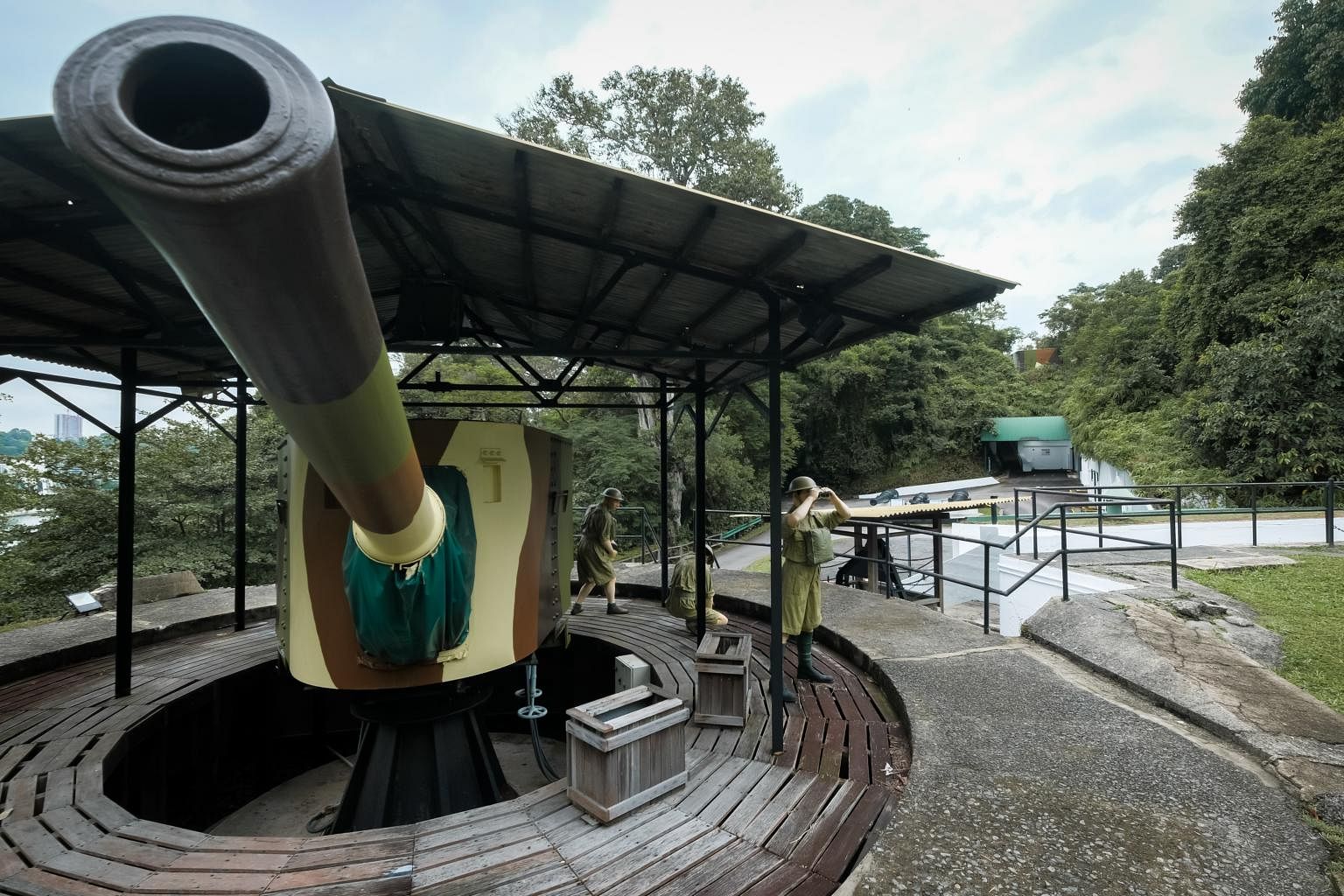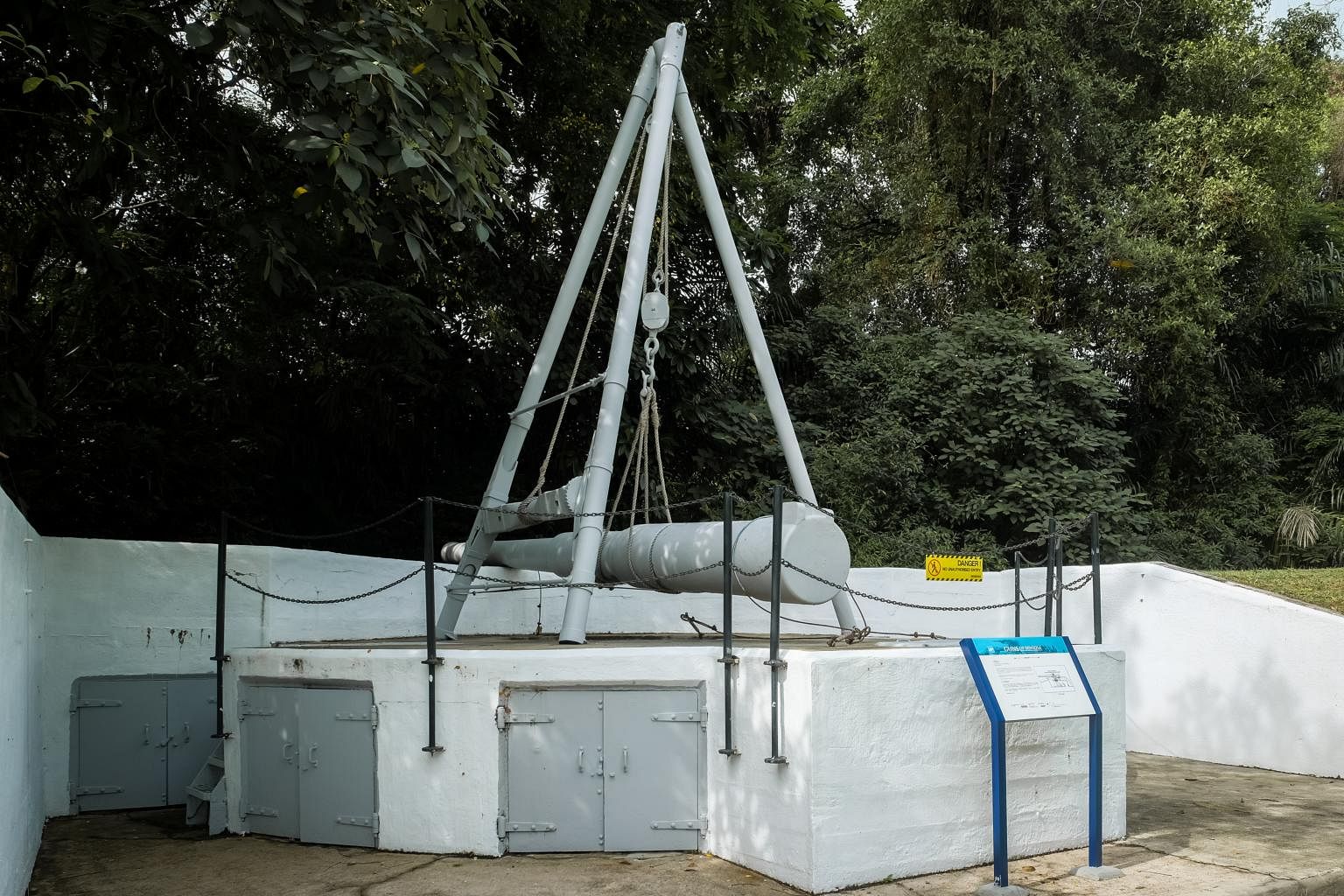SINGAPORE - Unlike most military strongholds, which have imposing walls and a distinct structure, Fort Siloso on Sentosa is one of the few remaining intact forts around the world with an open artillery battery design.
Designed by Henry Edward McCallum and built in 1878, the fort features gun placements and underground structures.
On Tuesday (Feb 15), 11 of these structures were collectively gazetted as Singapore's 74th national monument, the first site on Singapore's list of preserved built heritage.
Most of Singapore's 73 other monuments are buildings, while three bridges - Cavenagh, Anderson and Elgin - were collectively gazetted as a monument in 2019.
The fort's layout, which appears to include random gun placements, belies a carefully calculated defence strategy, said the National Heritage Board. Its guns create overlapping arcs of fire and the supporting structures scattered around the site do not impede line of sight from lookout points.
Here are key features of the newly-gazetted monument.
1. Casemates
These are strong underground chambers that provide accommodation, office and storage space.
They are designed to be shellproof and faced away from the sea to grant protection from hostile naval firing.
2. 6-inch Breech Loading Gun Emplacement

From this emplacement, located not far from the casemates, soldiers had a good view of the sea to the south-west, and of the Labrador Battery and Pasir Panjang to the north-west.
Guns at this emplacement were used during the Battle for Singapore in 1942, and were aimed at the mainland at advancing Japanese troops.
The guns were also used to destroy the oil refinery on Pulau Bukom to prevent it from falling into Japanese hands.
Three other gun emplacements were gazetted as part of the moment.
3. 6-inch Quick Firing Gun Magazine (Tunnel C Complex)

This magazine is one of three that was gazetted.
Magazines are underground structures that serve the guns above them. They are used to store shells and cartridges.
This magazine featured two ammunition hoists which brought ammunition to the surface, to be loaded in the guns.
4. Battery Command Post

As its name suggests, the battery commander was located here. It offered a clear view of the oil installations at Pulau Bukom, and of the western sea lanes into the area known today as Keppel Harbour.
The current two-storey post was only completed in 1912. Glass windows seen on the post today were a post-war addition, as glass shards scattered by an explosion would have injured soldiers in the post.
5. Fire Director Tower and Searchlight Posts

The Fire Director Tower was paired with a 12-Pounder Quick Firing Gun Emplacement to take out motorised torpedo boats, which were much smaller and faster than most naval ships.
Such boats were used to attack harbours because they were difficult for big guns to track and sink.
The addition of the three searchlights helped those in the tower to detect enemy ships.
Waters around the harbour were lit up at night to detect hostile fast-attack craft such as torpedo boats attempting to sneak up in the cover of darkness.
6. Sergeants' Mess and Officers' Mess

These were housed in two long buildings, one for the barracks and the mess, and the other most likely for a laundry room, a cook house and a tailor.
SOURCES: NATIONAL HERITAGE BOARD, FORTSILOSO.COM


